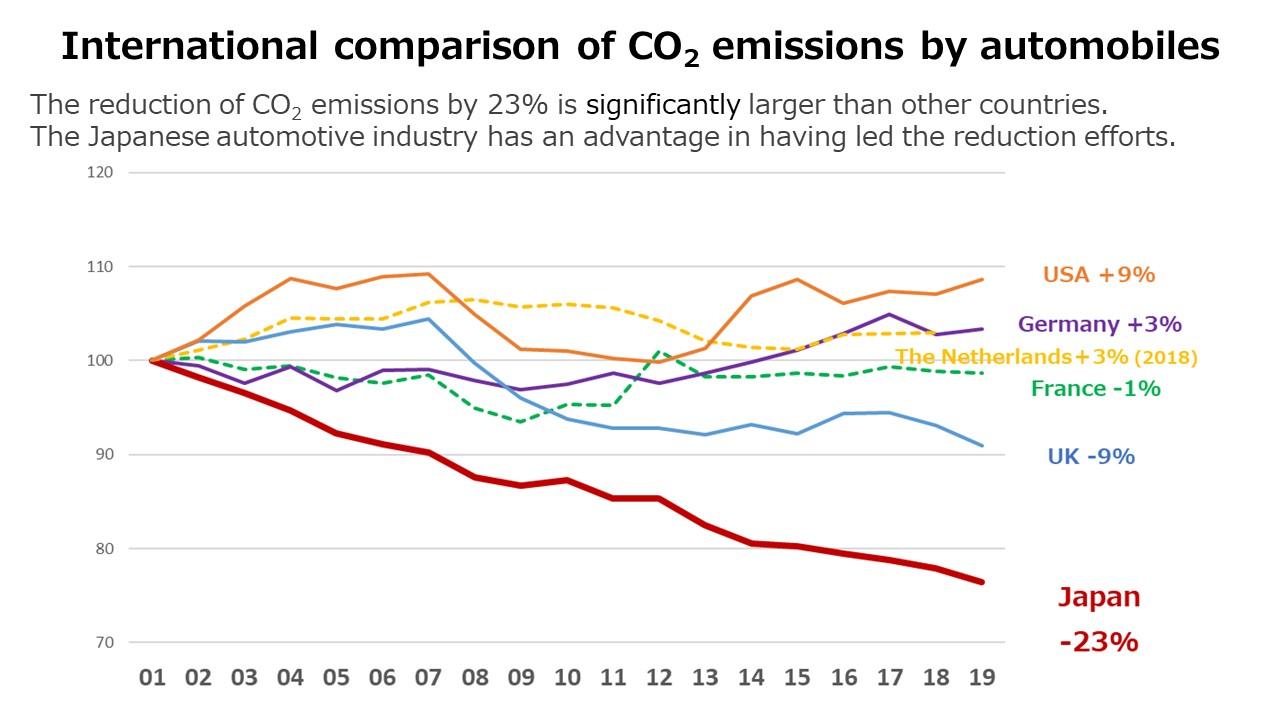
The newly established Keidanren Committee on Mobility kicked off in September. Having garnered much attention and gained registration from over 200 companies, what is the group hoping to achieve?
Point 3: What was discussed at the inaugural session?
The committee’s first session provided an opportunity to review the auto industry’s track record, including employment, tax contributions, and economic ripple effects, as well as the mobility industry’s potential for future expansion and challenges.
Along the way, at Akio’s suggestion, a survey was also conducted to gauge the attendees’ views on carbon neutrality.
Most agreed that, in the pursuit of carbon neutrality, all options should be explored without limiting choices and that individual countries should determine their own routes. These results suggested that many in the room endorsed the auto industry’s efforts.
Also presented was how turning the automotive industry into a mobility industry could create new value together with sectors such as tourism, logistics, and finance.
Accompanying projections for the year 2030 showed the industry’s economic impact growing from the current 60 trillion yen to 100 trillion, employment increasing from 5.5 million to 7 million jobs, and pushing tax revenues from 15 trillion to 25 trillion yen.

The discussion also extended to how the Japanese taxation systems—which are based on car ownership and not on diverse mobility services—might be geared towards a mobility society, affirming the need for revisions with a medium- to long-term perspective.
Point 4: Future activities
In May 2023, Hiroshima is scheduled to host a Group of Seven (G7) summit.
The summit will bring together the leaders of member nations and is a valuable opportunity to demonstrate the need for a diverse portfolio in the automotive sector and present a Japanese roadmap towards carbon neutrality.
In the leadup, business groups from the member states will meet for the G7 Business Summit (B7), where they will prepare a joint statement.
The Committee on Mobility will also coordinate discussions this fall between auto industry leaders and relevant cabinet ministers, including the prime minister.
No drastic reforms have materialized despite the industry’s past appeals to reduce automobile-related taxes and simplify the complex tax system.
At the same time, discussions on how to use automobile taxes for the future are becoming increasingly critical as the industry and country will need large-scale investment to accelerate efforts in connected, autonomous, shared, and electrified technologies and services.
The committee will continue to seek an overhaul of automobile taxes and the use of these taxes to strengthen Japan’s competitiveness in the mid-long term.
Summary: The goal is Japanese competitiveness
Keidanren’s Committee on Mobility is the first step in an all-Japan approach to carbon neutrality.
Akio was emphatic about the committee’s aims: “We want to ensure Japan has a presence in the world. Our unwavering focus will be to strengthen the country’s competitiveness.”
One thing to note when talking about Japan’s roadmap to carbon neutrality is the path the automotive industry has taken so far, as it has steadily and greatly reduced CO2 emissions.
Over the past 20 years, the industry’s improvements in fuel efficiency and the early shift to hybrids and other electrified vehicles have helped cut emissions by a world-leading 23%.

Japan’s automobile industry has been committed to exploring diverse options in pursuit of carbon neutrality. As more partners from outside the industry come on board, public mobility trials loom ever closer.

